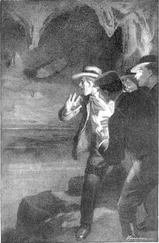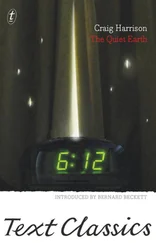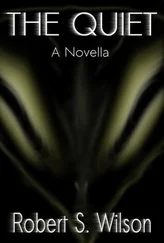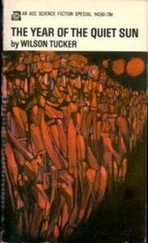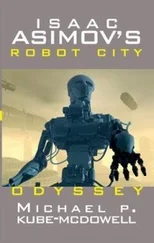“Disinformation campaigns are always vulnerable to the truth.”
“Yes,” said Marshall. “Do you know why I wanted to talk to the pioneers?”
“I assumed it was for the reason you told me.”
“I spoke with Karin Oker this morning, and she told me something that raised the hair on the back of my neck. According to her, when the early call to report went out for the Block 2 and Block 3 pioneers, more than seven hundred—almost twelve percent—opted out. Quit on us.”
It was a stunning, disturbing figure. In past calls, including those for Ur , no more than two percent had failed to report. “I hadn’t heard that.”
“That’s seven hundred leaks waiting to happen. I know the calls didn’t contain any damning information, but the circumstances are damning enough. Someone’s going to talk, and someone else is going to figure out what we’re up to,” Marshall said. “I’m wondering if perhaps we ought to announce it ourselves before that happens.”
“What does that gain us?”
“I know, it sounds like shooting yourself in the foot,” said Marshall, flashing a crooked, humorless smile. “Here’s my thinking. In his last address, Jeremiah hammered at the importance of keeping the colonists here. But once we’ve whisked them all away off-planet, there’s only one way to do that, and that’s to disable or destroy the ship. We’ve done our enemies a favor, really. Instead of a hundred strategies and a dozen attack points, they can concentrate on one goal and one big, fat, inviting target. Do you agree?”
“Yes.”
Marshall stopped and faced Dryke. “Then it seems to me that we can best protect the ship by making sure anyone and everyone knows that there are already three thousand people aboard, with more arriving every day. Considering how the Homeworlders feel about losing them, the pioneers are as good as hostages. They won’t dare a major assault.”
“It doesn’t add up that way to me,” Dryke said with a shake of his head. “If they stop Memphis , they stop Knossos and Mohenjo-Daro and Teotihuacán as well. The numbers don’t look that bad—sacrifice a few thousand to slam the door on tens of thousands. If they were really sure of themselves, they might warn us in advance, tell us to evacuate the ship. But I don’t think that’ll happen. I don’t think they’re going to be as worried about who’s aboard as we’d wish they would be.”
“Then why haven’t they done it yet? What’s holding them back?”
“I think that Jeremiah held them back,” Dryke said slowly. “I think he believed that he had the compelling case—that the ethical and logical correctness of his position guaranteed eventual victory. He wasn’t dueling with us. He was debating with us.”
“Evan Silverman wasn’t debating. Those people in Tokyo aren’t debating.”
“No. Jeremiah saw the writing on the wall. He knew he was running out of time. The game’s being played by different rules now.” Rules that Silverman introduced, and I ratified . “Matt Reid brings up this every time we talk. He agrees—the question isn’t if, it’s when and how. It’s entirely a question of logistics now. As soon as they figure out a way to take a shot at Memphis , they will.”
Marshall’s cheek twitched, and his gaze narrowed. “Is the ship safe?”
Dryke placed his hands on his hips and cocked his head before he answered. “I could run out a long list of precautions that we’ve taken and send you away happy and reassured. But it’s not the doors we bar that we have to worry about. It’s the one we don’t. It’s the surprise. Is the ship safe? The truth is, I don’t really know.”
Well into the second century of the Space Age, it was no secret that the best way to destroy a space habitat was to throw things at it. The things did not need to be big, complicated, or explosive, so long as they were thrown hard enough. A few kilometers per second was just fine, as everyone who remembered the inglorious end of Freedom knew.
Just nine years after it was completed, the American space station’s main module was shattered—and three astronauts killed—by an in-falling bit of space flotsam. According to one reconstruction, a fifty-gram binding rivet lost during the construction of the first Japanese direct-broadcast platform was the probable culprit.
But it was very hard to throw things at Memphis—as hard as throwing a bowling ball out of the bottom of a well. Most of the major habitats, including all but two of the satlands, were part of the “Ring of Pearls,” only two thousand kilometers above the Earth. Memphis was riding along in tandem with one of the exceptions—just ten klicks west of Takara, in Clarke orbit, thirty-six thousand kilometers above the blue Pacific and the atolls of the Gilbert Islands. Nothing orbited higher save for a geophysical survey satellite or two and traffic bound for Mars or Heinlein City.
Being at the top of the well was a considerable advantage. The fastest operational missile—the Asteroid Watch’s nuclear-tipped Stonebreaker—would take nearly an hour to arrive from low orbit. The Peace Force’s aging “shotgun” battle-suppression satellites could not do much better—their hypervelocity railguns would bridge the gap in twenty-six minutes at closest approach.
But orbital mechanics was not Memphis’s only defense. The universe threw things, too, especially at starships traveling at an appreciable fraction of the speed of light. Memphis had several layers of protection, including an ion deflector, the plasma bow cushion, and a particle defense system built around a pair of HEL free-electron lasers. Twenty-six minutes was more than enough time for the big gyros to turn the bell-shaped starship and bring the PDS to bear.
And against the one threat Memphis was not expecting to face in deep space—laser weapons—Reid had deployed around the starship several agile crane-trucks bearing huge square scatter plates in their construction grapples like shields. Dryke thought of them as the Knights Peculiar.
In that context, sabotage from within shaped up as a more likely prospect. But the memory of Javier Sola was strong, and putting a bomb aboard Memphis would be no mean feat.
The loyalty of the Takara workers, already securely anchored by community pride, was guaranteed by a simple expedient— the finishing crews were made up solely of those who had been selected to the mission. The small fleet of buses which ferried workers and materials across the ten-kilometer moat to the ship was owned by Transcon and operated by Diaspora pilots. And Governor Wian was allowing Matt Reid to supervise the screening procedures in the satland’s euphemistically named immigration and import office, Takara Welcome.
No possibility was too wild to take seriously—not even a pocket nuke smuggled into Takara and detonated there, turning the satland into a giant fragmentation grenade. Even the one scenario which most troubled Dryke, involving the hijacking of a Takara shuttle and its use as a 120-ton battering ram, had been covered nine ways to Sunday.
Secure without, secure within . The slogan was displayed in English and kanji throughout the Project quarter on Takara and Memphis . Seen so often, it had become a state of mind, a statement of reality. It would be unfair to say that Reid’s team was cocky, but they were confident.
Which is why the attack on Memphis , when it came, was every bit as much a surprise as Dryke had projected.
The black cylindrical satellite had been on station three and a half degrees east of Takara for nearly three months. It was listed in the Highstar registry as Slot 355, 177.5° East, Hughes TC-2000—a dedicated data communications satellite owned by RJR Financial Services, Wilmington, Delaware.
Читать дальше
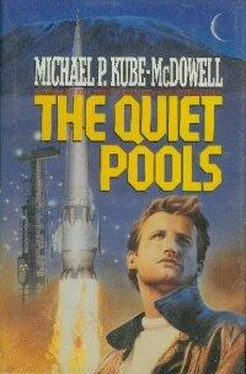
![Nick Cracknell - The Quiet Apocalypse [= Island Zero]](/books/28041/nick-cracknell-the-quiet-apocalypse-island-zero-thumb.webp)
